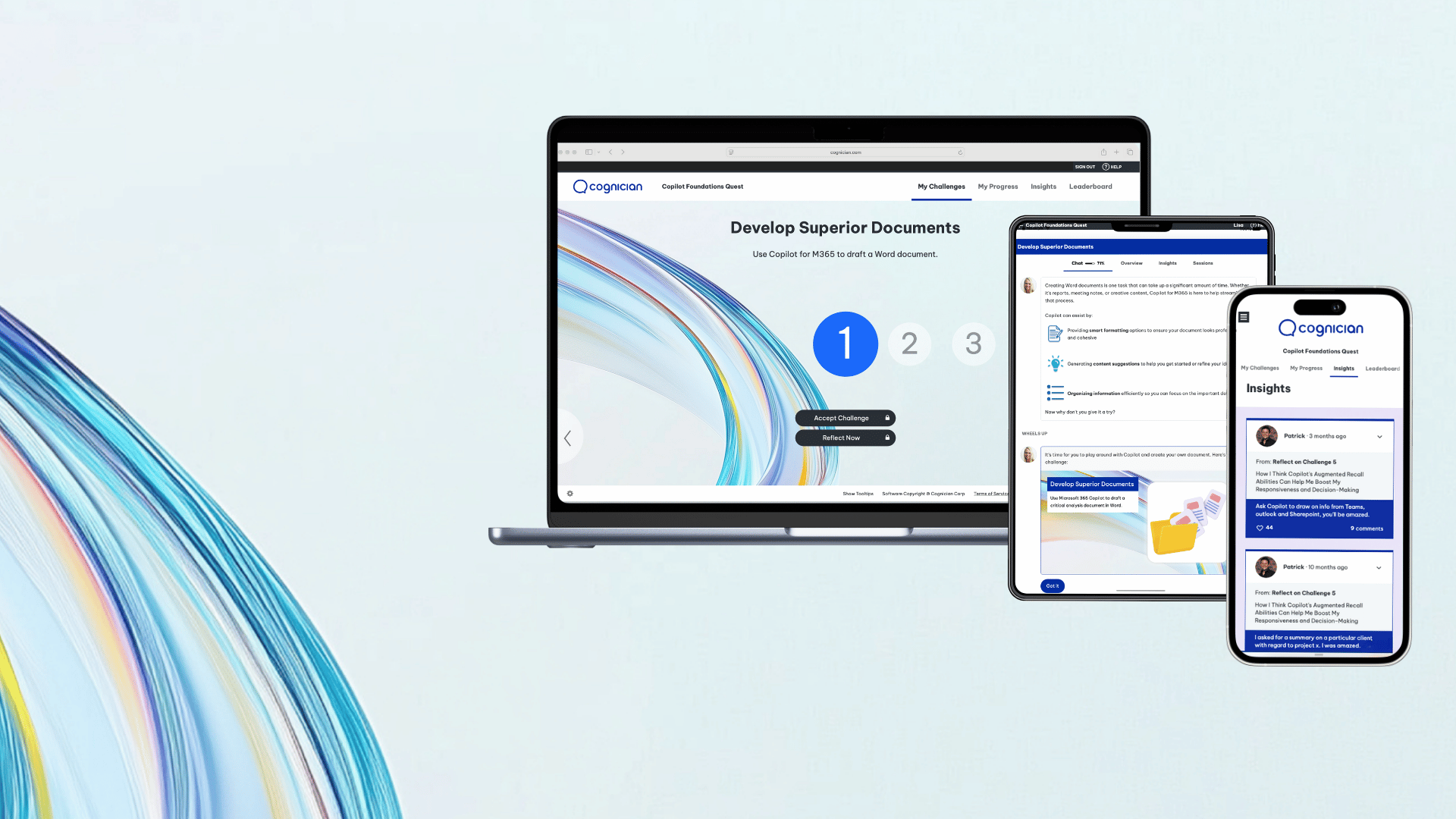Problem-based learning can activate behavior change in organizations far more effectively than micro-learning.
Isn’t it astonishing that a microscopic organism, invisible to the naked eye, can change the behavior of billions of people? When COVID-19 hit the news in 2020, organizations had little choice but to adapt or die. They had to meet the challenges of a major paradigm shift with little time to train workers to meet those challenges.
Yet, even pre-pandemic, a training “quick-fix” was already gaining traction: microlearning. Microlearning consists of bite-sized exercises or “learning nuggets”.
What's at the other end of the learning spectrum? Deep, problem-based learning. Deep learning requires more critical thought. Often, it leads to a cognitive breakthrough—a profound realization—that activates behavior change.
Microlearning and deep learning could not be more different.
But here's the problem. Due to its cost efficiency, it's tempting to use microlearning, where deep learning would be better.
I’ve recently been working with deep learning myself, and dealing with change at Cognician.
We’re growing rapidly—which requires adapting rapidly. One of our most urgent challenges is that we need to restructure our workflow to ensure a smooth handover from our sales to production teams. We know that, as we expand, our workflows must become more efficient.
So I began researching workflow. I’ve turned to Google for insight, created and compared workflow diagrams, and looked into what other companies are doing in this space. I’ve considered using different software, including whether our best bet would be to design our own custom solution.
This process has required a thorough understanding of our resources, processes, and ultimate goals. It also required time—to gather available knowledge on workflow best practices, to sift through it, and to reflect upon all the information to make sure I made the absolute best decision. Throughout this learning process, I developed an ever-changing mental model, rich with fertile ideas.
Then, finally, “Aha!”
Suddenly, I clearly envisioned exactly how to best design new workflow processes, what I want our learning software to look like, and how to smoothly transition between each growth phase as we expand.
This is deep, problem-based learning. And this is what is so often missing from workplace training and coaching programs. Especially when it comes to change management too.
Now, we all have times when microlearning is all we need. This type of learning works quite well if you need to learn a highly specific, straightforward skill.
Say, for example, you need to figure out how to create a company expenses spreadsheet in Excel. You conduct a quick Google search, and of course, you’ll very quickly find how-to articles and YouTube tutorials. These will walk you through the steps you need to take to create the spreadsheet.
After reading an article or watching a video, you go into Excel, and get it done. Voila! This is an excellent example of microlearning or just-in-time learning. It requires little prep time, critical thought, or emotional investment.
Deep learning is very different.
When you’re in deep-learning mode, the aim is to connect the dots between your existing, unique knowledge and new knowledge or perspectives.
This process develops your understanding of a complex concept. In other words, it’s an attempt at making cohesive sense of a bunch of moving parts. If deep learning is effective, the learner will experience a climactic cognitive breakthrough.
“Aha!” Or, “Eureka!” if you prefer.
The problem isn’t that organizations are implementing microlearning. It’s that they may be overusing microlearning.
Microlearning is highly attractive for several reasons.
For one thing, it’s inexpensive. Plenty of credible, or at least somewhat credible, content on any given topic can be found online, usually for free. Decision makers ask, “Why create something new for our employees, when there‘s already so much content out there?”
For another, it takes up far less time. Giving someone a short video to watch or an article to read takes a matter of minutes.
However, do you think that having employees watch a 15-minute video about a complex, deeply important topic like conflict resolution will result in any real change in their behavior?
I can tell you from experience that it won’t.
What will result in a change in their behavior is a thoughtful, spaced-out learning program that offers not only informative content, but also moments for reflection, opportunities to share what they’ve learned with their peers, and ways to practice what they’ve learned in their daily lives.
In other words: deep, problem-based learning.
Understanding a complex concept requires “ramp-up time.” As a learner begins taking in knowledge around a particular topic, making their own connections and creating their own mental models, the entire landscape begins to reconfigure. Eventually, the learner notices patterns they hadn’t before. This is the “Aha!” moment—the experience that ingrains deeply rooted, lasting knowledge in a learner.
But in shallow microlearning, “Aha!” moments are either scarce or nonexistent.
Consider each 10-minute microlearning session a star in the night sky. The larger system, or topic, that a learner is trying to understand is a constellation. In microlearning, the learner sees only one star, or perhaps two or three, per session. They’re offered only a narrow pinhole view of the night sky. This method stifles a learner’s ability to connect the various dots and gain a comprehensive understanding of the entire learning system (or constellation).
So, why limit your employees’ view through microlearning, when deep, problem-based learning is called for?
It’s true that creating truly effective learning experiences is an expensive process that requires careful consideration of numerous factors. It’s also a very necessary investment. Because while microlearning may seem cost-effective at the time, ultimately, in the long run, it is the opposite.
Deep learning is, and will always be, a highly effective way to learn things of considerable, lasting value. And to activate behavior change that sticks.
 About the Author: Barry Kayton is Founder and CEO of Cognician, a global company that transforms large organizations by activating behavior change at scale. He has been a corporate learning and behavior change specialist since 1993. Barry and his brother Patrick started working together in 1999. Their learning and change programs reached more than 500,000 students and 20,000 educators by 2009. They founded Cognician in 2010 to make behavioral change solutions available at scale. They became Endeavor Entrepreneurs in 2013 and Unreasonable Group Fellows in 2020.
About the Author: Barry Kayton is Founder and CEO of Cognician, a global company that transforms large organizations by activating behavior change at scale. He has been a corporate learning and behavior change specialist since 1993. Barry and his brother Patrick started working together in 1999. Their learning and change programs reached more than 500,000 students and 20,000 educators by 2009. They founded Cognician in 2010 to make behavioral change solutions available at scale. They became Endeavor Entrepreneurs in 2013 and Unreasonable Group Fellows in 2020.



.png)

